Millstone images - composite millstones Home Millstone Page
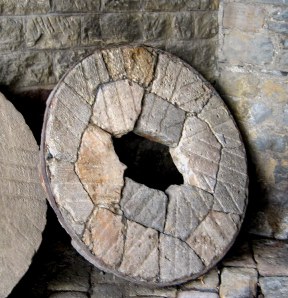 |
Composite millstone - Caudwells Mill, Rowsley. This is a typical 19th century "French" stone - sections of chert cemented together and held by steel bands around the circumference. The source of the chert - a natural silica rock similar to flint, but less likely to take a polish - was northern France. Although complete millstones were imported, it was probably more common for chert blocks to be imported and the complete stone assembled in England, often in Derby or London . Note the grooves - "furrows" - that show this was the working face.
|
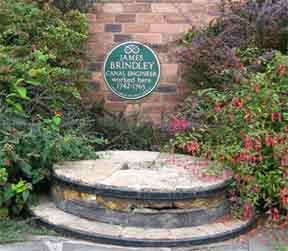 |
A composite "French" stone outside the Brindley Mill, Leek. Chert stones could be used to break open wheat grains more cleanly than millstone grit stones. This allowed the bran - the outer shell of the wheat grain - to be separated more easily and produce white flour, which was seen, prior to the 20th century, as less likely to be adulterated and therefore healthier.
|
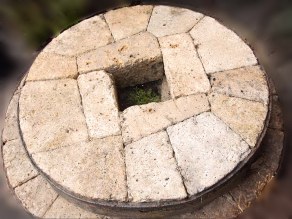 |
Composite "French" stone outside the Brindley Mill, Leek
|
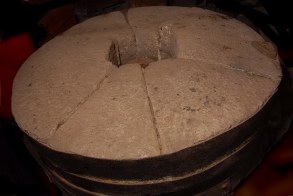 |
Mow Cop stone at the Brindley Mill, Leek. Blocks of good grit were quarried at Mow Cop, near Biddulph. These were shaped and fitted together, sometimes without cement, and held together by steel bands. It is not clear whether this is was because it was difficult to quarry monolithic stones or a regional preference that allowed easier transport. Composite stones are probably under-represented at mill sites because they could be disassembled or simply fall apart when the steel bands rusted away and the stone used for other purposes.
Thanks to the reader who spotted that the origimal entry claimed the stone was in another mill!
|
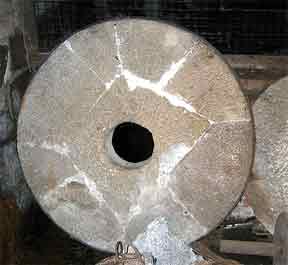 |
Composite grit millstone - Alderley mill. There seems to be no standard design for "Mow Cop" stones and this one incorporates cement, unlike those at the Brindley Mill, and is thinner in section.
|
Copyright @ 2010 Stephen N.Wood. All rights reserved.